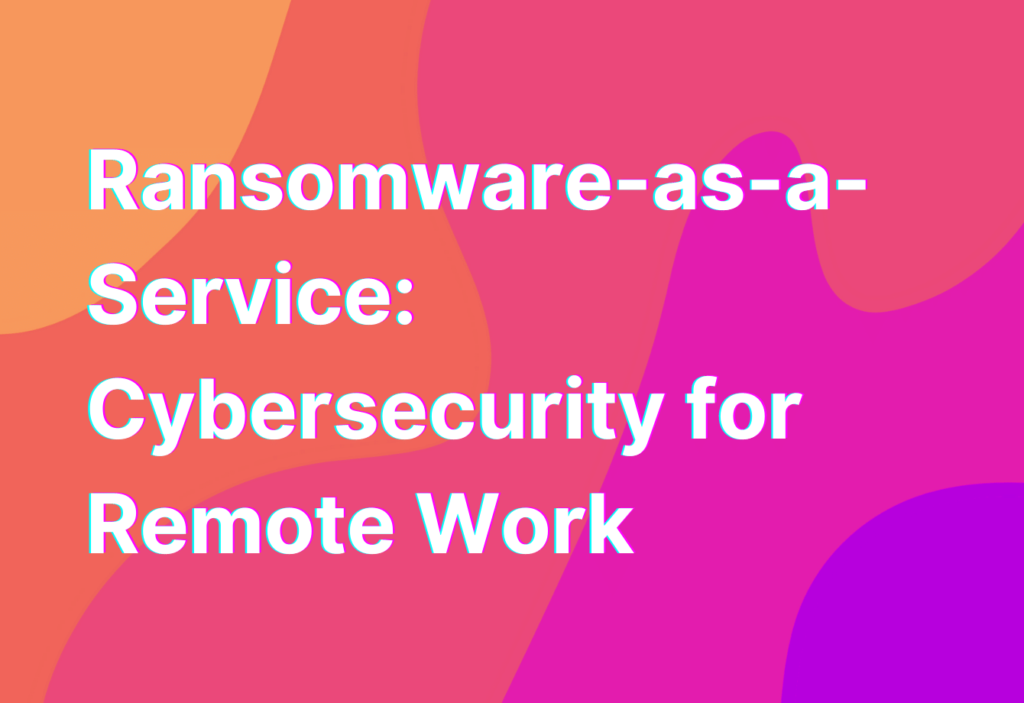Ransomware-as-a-Service: Cybersecurity for Remote Work
Hey there, remote work enthusiasts! It’s Ashley here, your go-to gal for all things remote work. Today, I want to talk about a topic that’s been making waves in the cybersecurity world: Ransomware-as-a-Service. Now, I know what you’re thinking – ransomware doesn’t sound like something we should be celebrating. And you’re absolutely right! But bear with me, because understanding this concept is crucial for keeping your remote work setup secure.
What is Ransomware-as-a-Service?
Let’s start with the basics. Ransomware-as-a-Service, or RaaS for short, is a type of cybercrime where hackers offer their ransomware tools and services to other individuals or groups. It’s like a twisted version of the sharing economy, where instead of renting out your spare room, you’re renting out malicious software to hold people’s data hostage. Yikes!
With RaaS, cybercriminals don’t need to have advanced technical skills to launch a ransomware attack. They can simply purchase or rent the necessary tools from more experienced hackers. This lowers the barrier to entry for cybercrime and allows even the less tech-savvy criminals to get in on the action. It’s like cybercrime for dummies!
How Does Ransomware-as-a-Service Work?
Now that we know what RaaS is, let’s dive into how it actually works. Typically, the cybercriminals behind RaaS create a user-friendly platform where aspiring hackers can sign up and access their ransomware tools. These platforms often come with customer support, tutorials, and even marketing materials to help the wannabe hackers succeed in their nefarious endeavors. It’s like a twisted version of a tech startup, complete with a help desk!
Once a user signs up for RaaS, they can customize their ransomware attack by choosing the target, the ransom amount, and even the deadline for payment. The RaaS provider takes care of the technical aspects, such as encrypting the victim’s data and providing the necessary instructions for payment. It’s like ordering takeout, but instead of getting delicious food, you get a headache and a hefty ransom demand!
The Impact on Remote Work
So, why should remote workers be particularly concerned about Ransomware-as-a-Service? Well, as remote work becomes more prevalent, so does the potential for cyberattacks. Remote workers often rely on cloud-based services, file sharing platforms, and collaboration tools to get their work done. And guess what? These are prime targets for ransomware attacks!
Imagine this: you’re working on an important project, and suddenly, all your files are encrypted and held hostage by a cybercriminal. You’re unable to access your work, and the clock is ticking. The cybercriminal demands a hefty ransom in exchange for the decryption key. What do you do? Panic, probably. But fear not, my remote work warriors, because I’m here to help you stay one step ahead of these cybercriminals!
Protecting Yourself from Ransomware-as-a-Service
Now that we understand the threat of Ransomware-as-a-Service, let’s talk about how we can protect ourselves. Here are some essential cybersecurity practices for remote workers:
- Keep your software up to date: Regularly update your operating system, antivirus software, and other applications to ensure you have the latest security patches.
- Use strong, unique passwords: Avoid using the same password for multiple accounts, and consider using a password manager to keep track of your credentials.
- Enable two-factor authentication: Add an extra layer of security to your accounts by enabling two-factor authentication whenever possible.
- Be cautious of phishing attempts: Don’t click on suspicious links or download attachments from unknown sources. Always double-check the sender’s email address before sharing sensitive information.
- Backup your data: Regularly backup your important files to an external hard drive or a cloud storage service. This way, even if you fall victim to a ransomware attack, you’ll still have a copy of your data.
Remember, remote work can be a dream come true, but it also comes with its own set of cybersecurity challenges. By staying informed and implementing these best practices, you can protect yourself and your work from the threat of Ransomware-as-a-Service.
Wrapping Up
Well, folks, that’s a wrap on our discussion about Ransomware-as-a-Service. I hope you found this information helpful and that it empowers you to take the necessary steps to secure your remote work setup. Remember, cybersecurity is a team effort, and we’re all in this together!
If you want to dive deeper into the world of remote work cybersecurity, be sure to check out our Security Incident page. It’s packed with essential information to keep you one step ahead of the cybercriminals. Stay safe out there, my fellow remote work warriors!


